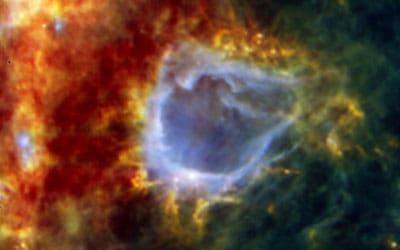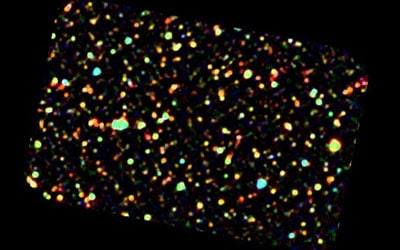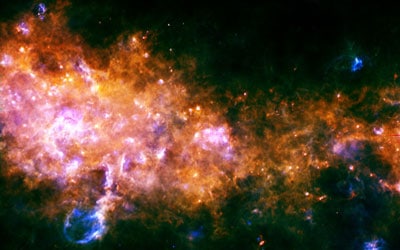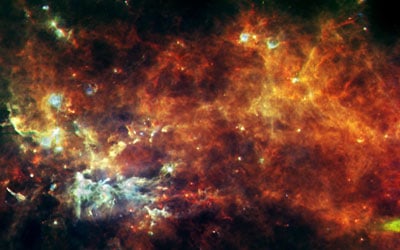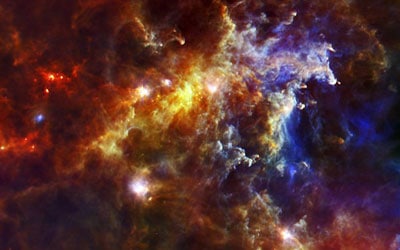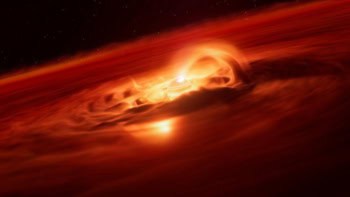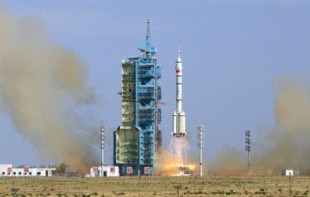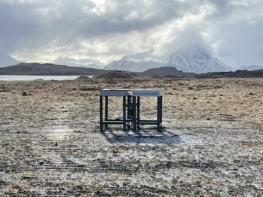
The first scientific results from the Herschel infrared space observatory have been unveiled by the European Space Agency (ESA). Some images reveal billowing clouds of gas and dust that astronomers believe will go on to form stars and planets. Others provide new views of the early universe, showing distant galaxies that are invisible to the likes of the Hubble Space Telescope.
Launched in May 2009, Herschel is a far-infrared and submillimetre telescope that probes the universe’s coolest objects, from the era when the first stars and galaxies were formed to the present day. It started taking data in July last year and the new images include those of the star-forming cloud RCW 120, which Herschel has discovered contains an embryonic star that could evolve into one of the largest in the Milky Way.
The star is already 8–10 solar masses and is surrounded by about 2000 solar masses of dust that it could suck in. “This star can only grow bigger,” says Annie Zavagno of the Laboratoire d’Astrophysique de Marseille, adding that its discovery could help astronomers improve current theories of star formation, which limit star size to about eight solar masses.
Meanwhile, at the farthest reaches of the universe, Herschel has so far discovered more than 1000 distant galaxies. These galaxies emit large amounts of infrared radiation, and the Herschel images show that these objects are responsible for more than half of the cosmic infrared background radiation originating from that part of the universe.
Unlike the Milky Way, which creates about three new stars per year, some of these ancient galaxies are forming thousands of stars per year. “We can use these results to study what controls star formation in these distant galaxies, and how galaxies like the Milky Way formed,” says Dieter Lutz of the Max Planck Institute for Extraterrestrial Physics in Garching, Germany.
Piercing the veil
These star-forming regions are hard to see because they are usually shrouded in gas and dust that blocks visible light. But as infrared radiation pierces this veil, Herschel has the resolution to reveal the details of how clouds of cool atoms and molecules coalesce into stars. Furthermore, the clouds themselves emit mostly infrared radiation and therefore Herschel should shed light on both the origins of these clouds and how they evolve into stars.
Herschel operates in Earth orbit because water vapour in the atmosphere absorbs much of the infrared radiation from space – and because the Earth itself emits vast quantities of infrared radiation that can swamp ground-based telescopes. Sensitive to light with wavelengths of 55–670 µm, its mirror is 3.5 m across – the largest ever deployed in space. Infrared radiation is detected using instruments that must be cooled to temperatures of near absolute zero using liquid helium. The mission will end when the coolant runs out, which is likely to be some time in 2012.
All images courtesy of the European Space Agency.
